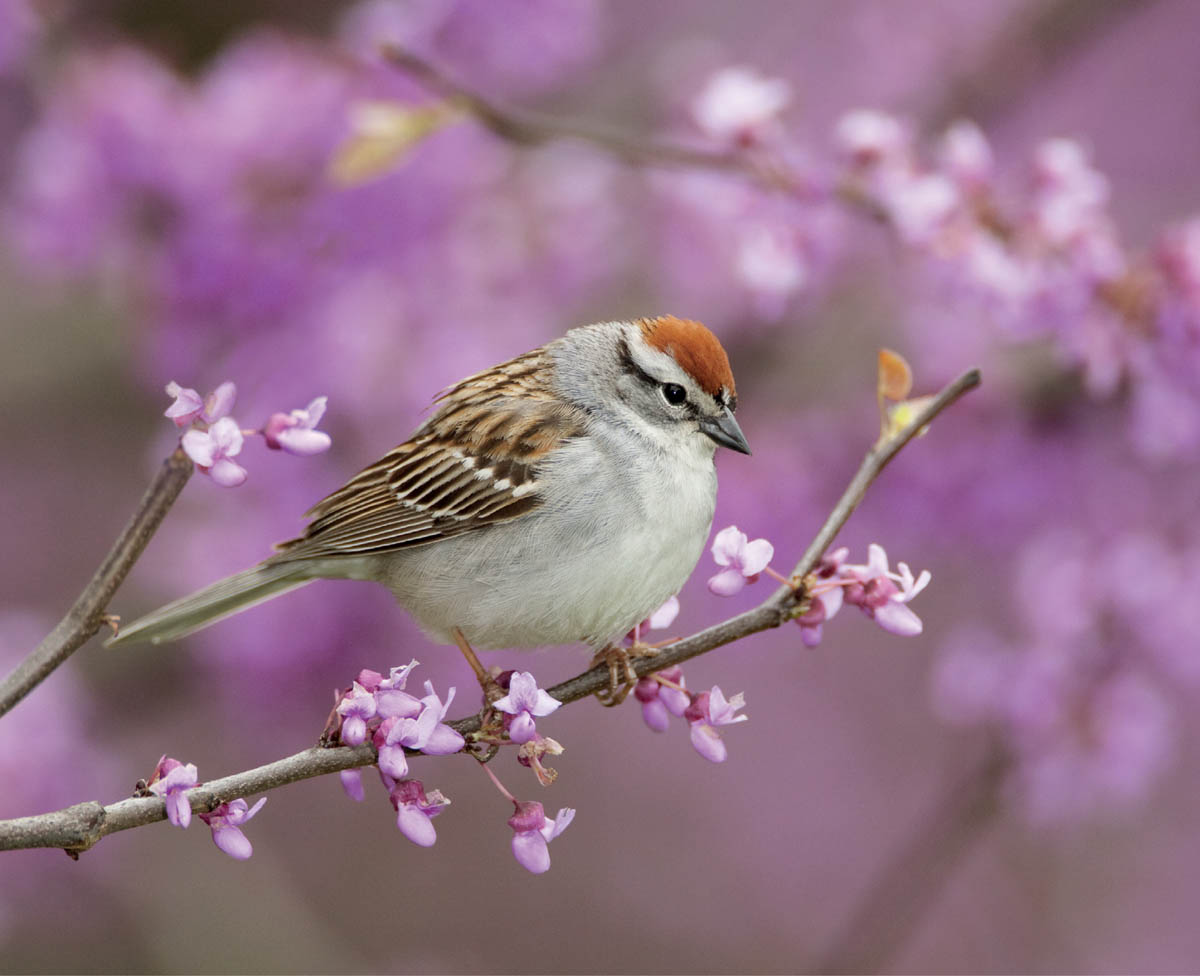
Chipping Sparrow adult
Chipping Sparrow nesting habits can be relatively easy to observe in backyards throughout much of the continent. Chippies often nest at eye level in small conifers, so we can peek in on their progress occasionally until the nestlings’ eyes are open. At that point we must keep our distance; they may prematurely fledge if they notice an observer.

Chipping Sparrow adult
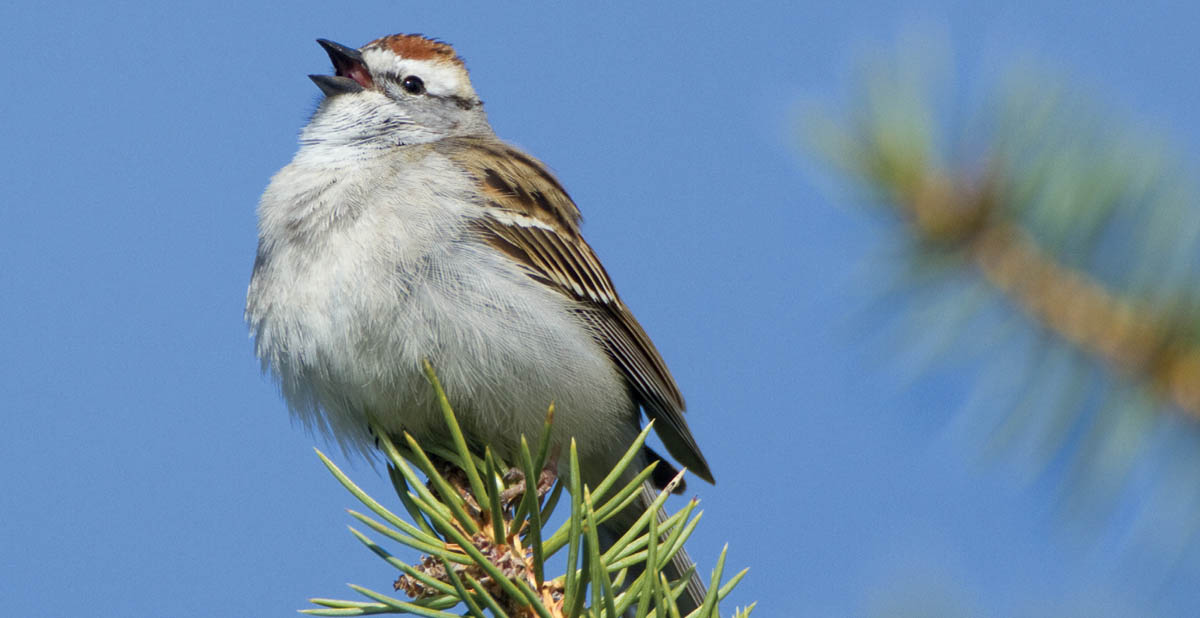
The male Chipping Sparrow sings from high perches on top of a tree or shrub or a building roof. At dawn he sings in quick bursts of staccato chips; he occasionally sings at night.
Female Chipping Sparrows arrive on territories a week or two after males, and within days, the birds pair off. The female builds the nest over three to four more days, placing it low in a thick cluster of leaves or needles in a tree or shrub, usually a conifer, often close to a building that may shelter it from weather. She constructs the nest from fine materials, including rootlets and dried grasses, lining it with more animal hair and fur than most birds use. You may see the tiny birds plucking hairs from live mammals, from horses to golden retrievers. The male stays close, perhaps partly to prevent visits by other males.
The nest is loosely woven and even flimsy. Though light can often be seen through it, the weave is tight enough to hold the eggs. Nests are seldom, if ever, reused, but females often dismantle old nests to salvage the materials. Females seem to grow attached to nest sites, and marked birds often return to the same small stand of trees to nest year after year.
When egg-laying begins, the mother visits the nest only to lay an egg each morning, and is likely to abandon the site if she notices any disturbances. She begins incubating after laying the penultimate egg, sitting for periods of a half hour or so between breaks of about 9 minutes. As incubation advances, she sits more tightly, not flushing, even when someone approaches, until actually nudged. While incubating, she seems rather restless, frequently changing position, pecking at the nest materials, turning the eggs, and fluffing and preening her feathers.

A Chipping Sparrow surveys its territory from a spring-blooming branch.
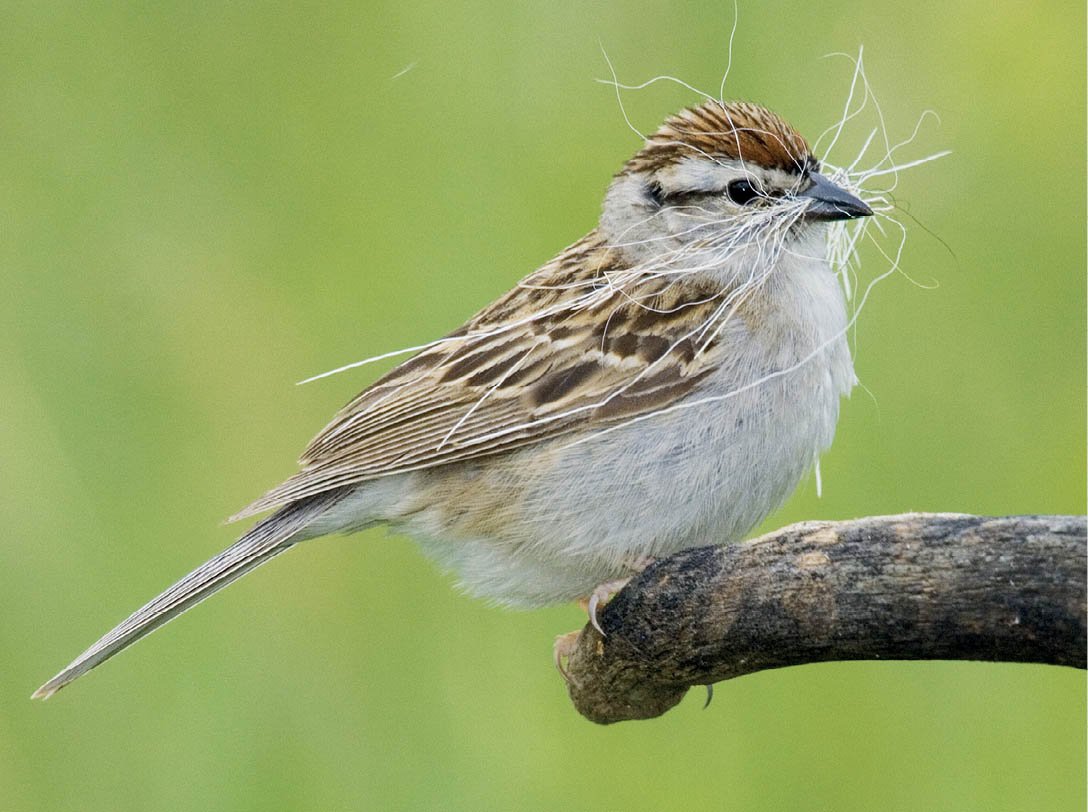
A Chipping Sparrow carries a beakful of animal hair to line her nest. Male and female investigate nest sites together, but the female appears to make the final choice, as well as doing all the building.
The Chipping Sparrow’s song is a long trill of evenly spaced, dry chips all on the same pitch, beginning softly and becoming stronger until the end. Anyone who wishes to master bird songs should learn this one, because several other birds sing songs that are most easily described in comparison with it. For example, Dark-eyed Juncos sing a similar trill that is shorter and slightly more musical. Pine Warblers sing a more musical version, and Worm-eating Warblers sing a drier, more mechanical trill. Swamp Sparrows sing a much slower variation.
Chipping Sparrows are frequent hosts of Brown-headed Cowbirds. If a cowbird lays an egg in a nest with just one or two chippy eggs, the sparrow often deserts and starts a new nest somewhere else. The more effort a Chipping Sparrow has invested, however, the less likely she is to desert; if she’s produced three or more eggs before a cowbird egg appears, she usually keeps attending her nest anyway.
Cowbirds usually remove one egg before laying their own, so if a cowbird egg is present, it generally means the sparrow’s own chick production was reduced by one. Hungry cowbirds outcompete the smaller sparrow nestlings for feedings. When food is abundant, a nest can produce three Chipping Sparrow fledglings as well as one cowbird, and only rarely do all the hosts’ chicks die while a cowbird successfully fledges.
Despite high parasitism rates, Chipping Sparrow populations remain robust; researchers are still trying to determine how detrimental parasitism is to this species.
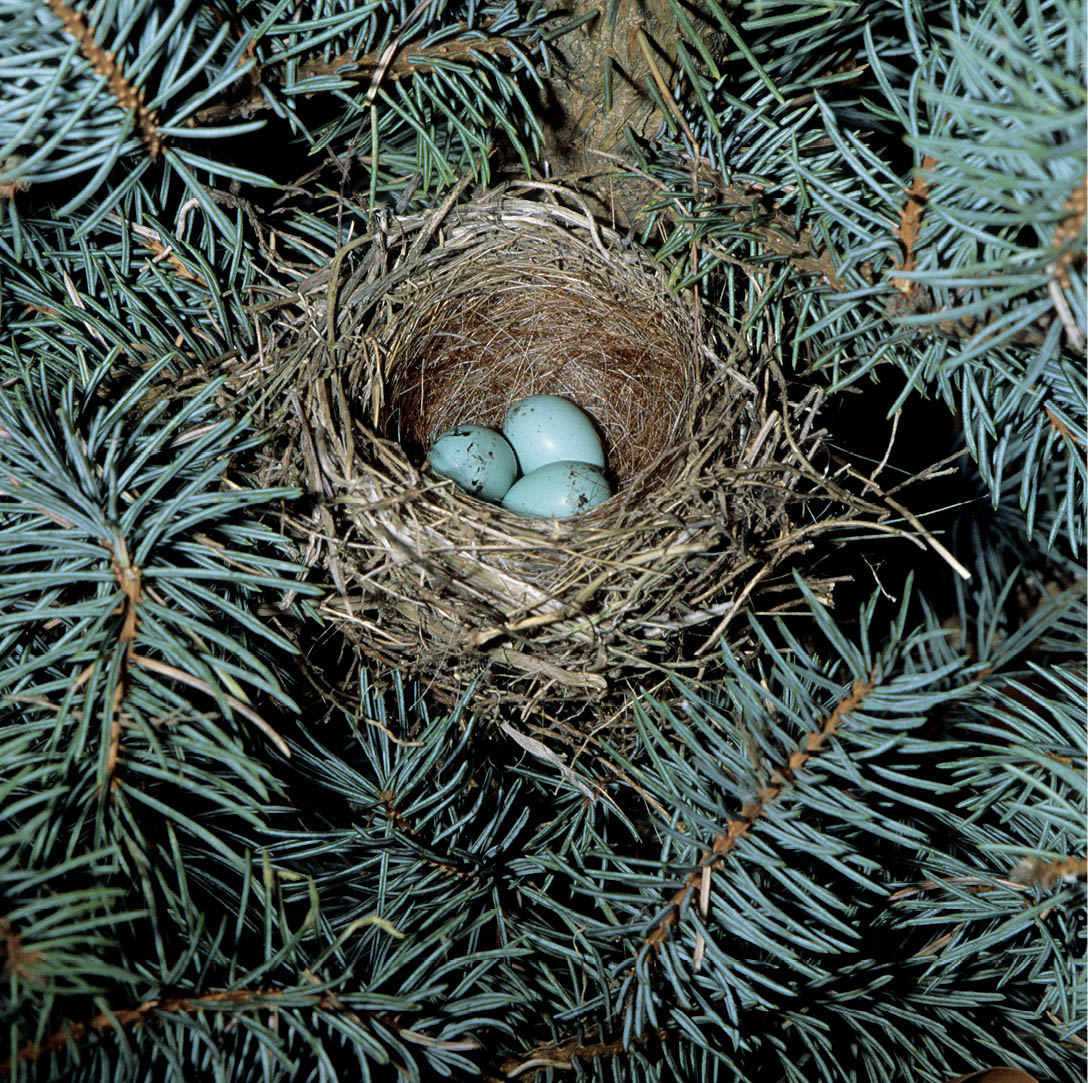
A Chipping Sparrow nest containing three eggs amid the needles of a conifer. Notice the lining of hair in the nest. In the days of horse-drawn carriages, the Chipping Sparrow was nicknamed the “hair bird” from its use of horsehair in its nest.

The female Chipping Sparrow incubates the eggs for 10 to 12 days and also broods the newly hatched nestlings. The male often feeds his mate at or near the nest during incubation, approaching with soft chipping calls. The female responds by fluttering her wings and calling.
The tiny, altricial chicks are weak and helpless at hatching, but the moment they feel a nest vibration, they lift their heads and open their capacious mouths. The parents feed them mostly seeds for the first few days, switching to more insects as the young grow. This is unusual; most songbird chicks are given high-protein insects during their early growth stages.
At five days old, the nestlings recognize their parents by sight and sound, and crouch into the nest when they hear anything unexpected. They start making weak sounds when two to four days old, and are audible to our ears by the time they’re five days old; their sounds grow steadily louder until fledging.
Hatchlings. Chipping Sparrows hatch partly covered with wisps of long gray natal down on their crowns and bodies. When begging, they appear to be little more than bulging eyes and gaping mouths. The red mouth lining is edged with creamy yellow flanges, swollen toward the corners of the bill.
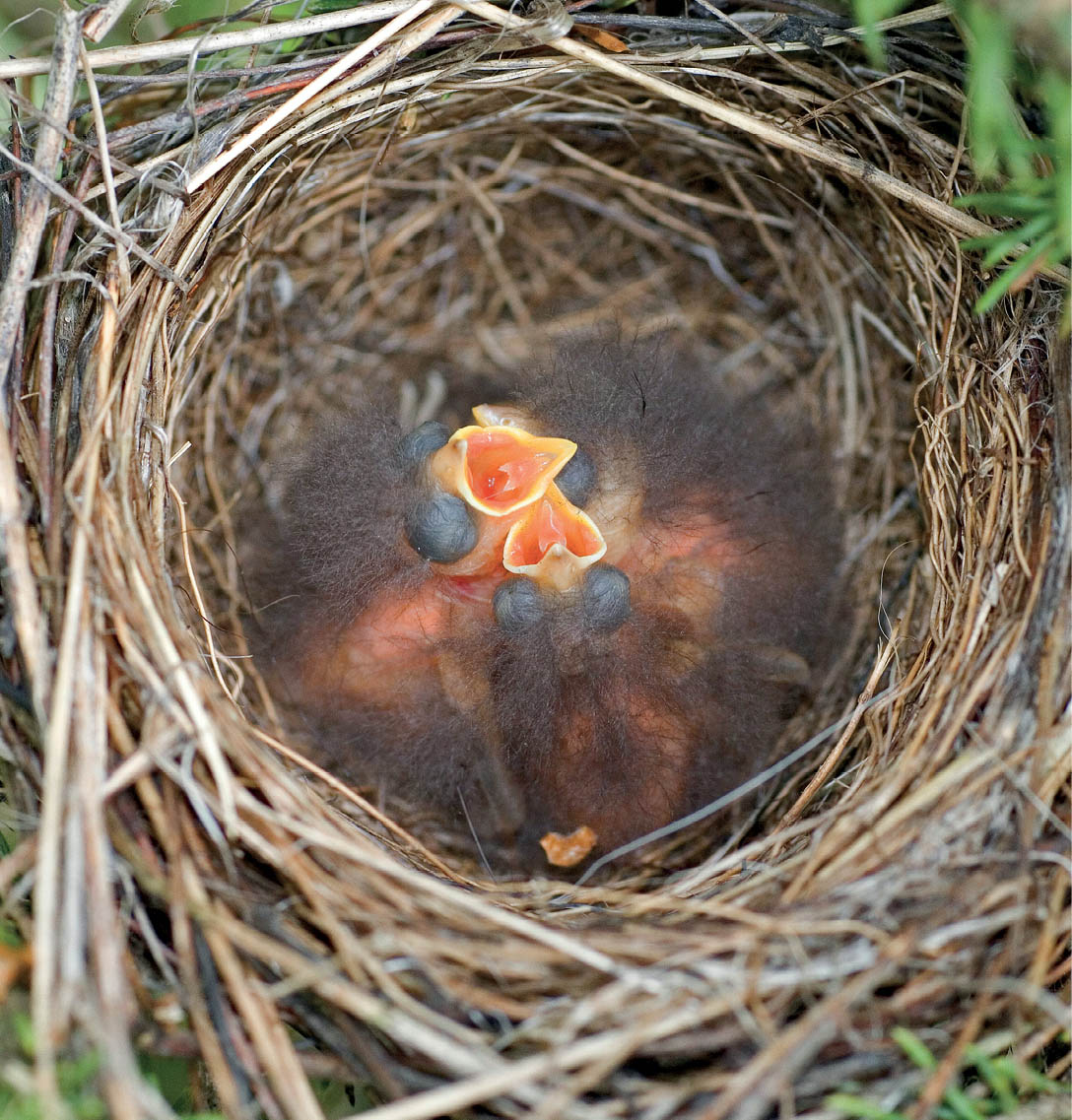
A few days old. A Chipping Sparrow feeds its nestlings, who beg with yellow-edged red gapes. For the first three days, the male provides all the food, often passing it to the brooding female who transfers it to the young.
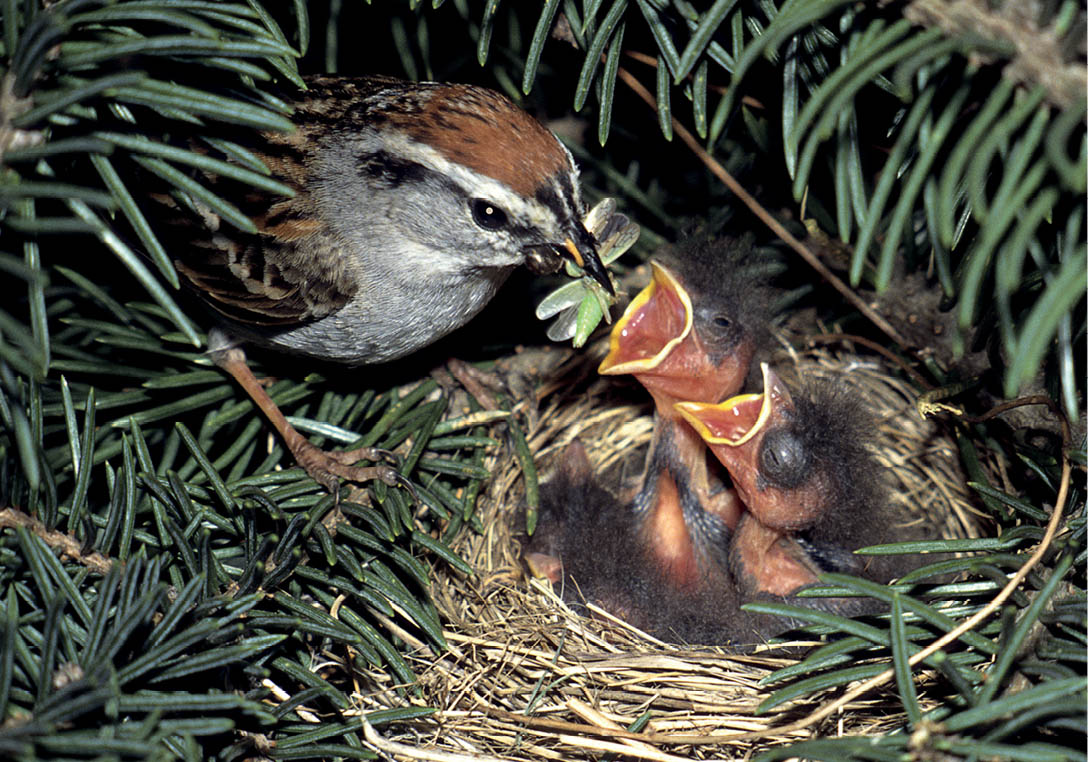
Soon to fledge. Chipping Sparrow nestlings, 10 days old, perch on the nest rim with a parent (left). Though well feathered, they have tiny tails and stubby wings for several weeks. Although capable of fluttering, when frightened they climb away into the surrounding branches.
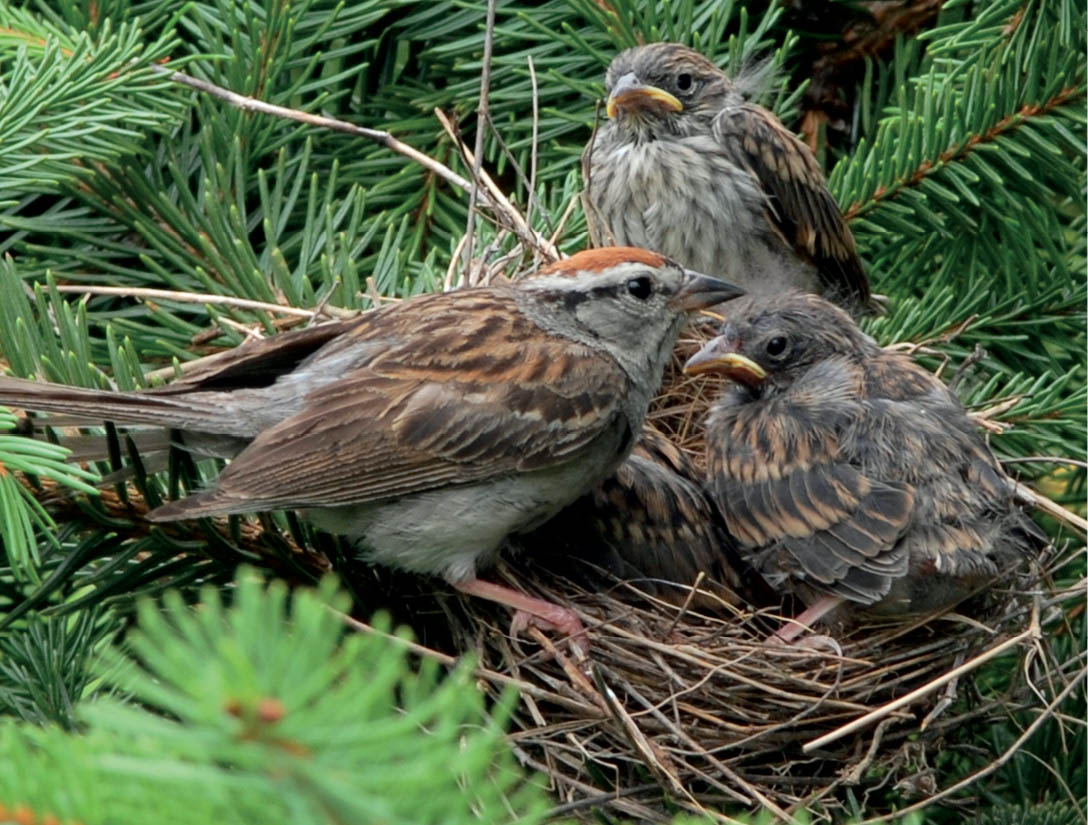
Fledging. An adult Chipping Sparrow feeds a fledgling. After the young fledge, the family stays near the nest for several days as the young birds take short flights, gradually moving farther away from the breeding area.

On its own. This juvenile Chipping Sparrow is now independent. Young birds forage in weedy areas in small flocks that slowly increase in size as more young birds and then adults join.
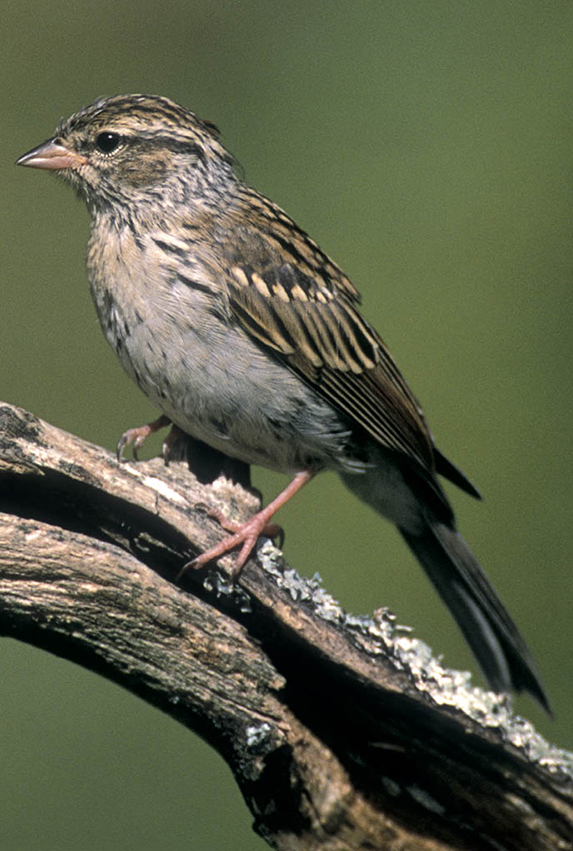
If undisturbed, Chipping Sparrow young fledge when about 12 days old, but when frightened by a perceived predator, they may leave earlier than that. Their chances of survival are very limited if they leave the nest before nine days old. The young depend on their parents, begging from them with quivering wings, for up to three more weeks, before starting to explore and find their own food. If the female has begun a second brood, the male takes care of the first brood until they reach independence.
Researchers have learned that after nesting has begun, at least some males move through neighboring territories, mating with any willing females they encounter. DNA analysis will determine whether these males produce offspring in these nests and whether, while one male is off visiting his neighbors, other chippies are coming in and mating with his mate.